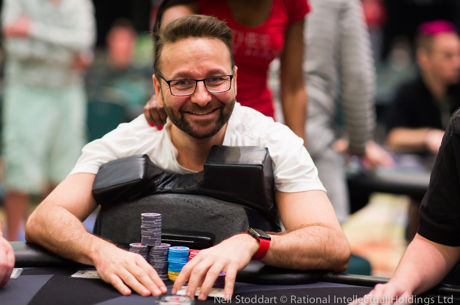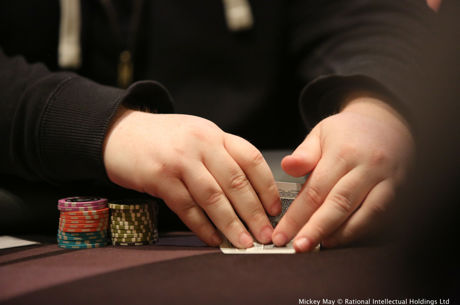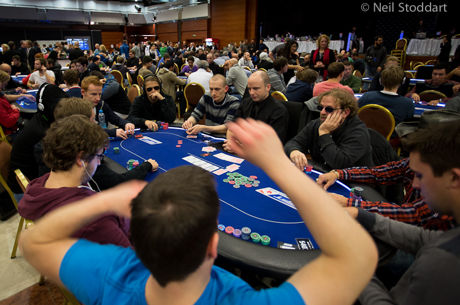Poker Strategy: How to Play in Position
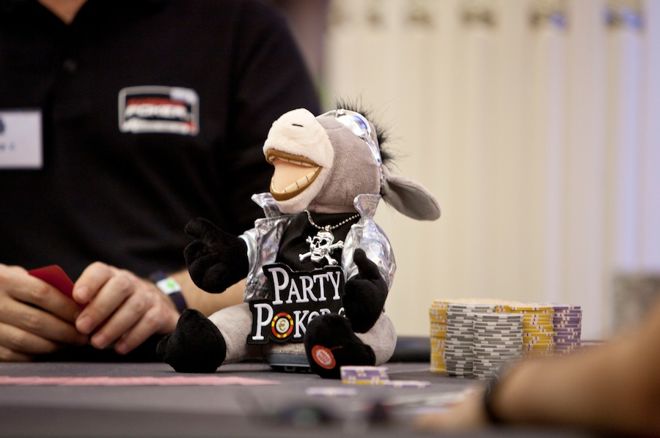
My previous article — "Do You Play Too Many Hands?" — pointed out that the average Vegas, low-stakes no-limit hold'em player is far too loose. Their average VPIP (Voluntarily Puts $ In Pot) is 37 percent, which is perhaps double what it should be. One of the main reasons for this looseness is that the average Donkey Gamer is "position-dumb."
We know that poker is an information game. So it stands to reason that the more information we have about our opponents, the more profitable we will be. When we are first to act, we have minimal information about our opponents. When we are last to act, we have maximal information. This additional information will sometimes allow us to win a pot with a weak hand. We may also be able to dump our strong hand when previous action makes it clear (or should make it clear) that we have the worst of it.
Yet the average Donkey Gamer generally ignores the immense value of superior position.
Online Profit vs. Position Awareness
There are several ways we can study position awareness. For example, we could study position awareness from the standpoint of looseness (VPIP) or aggression (PFR, preflop raise). We could also consider awareness from late position (CO and HJ) or from the button. But perhaps the most illuminating stat is Late-Position VPIP Position Awareness. This is simply:
Calculating this stat is easy — we just count the number of hands we play in LP (CO and HJ) and divide by the number of hands we play in EP (UTG and UTG+1).
Recall from my previous article that LP-VPIP-PAW is 1.0 for the average Vegas $1/$2 player. This means that he plays the same range from the cutoff as he does under the gun. When he likes his hand, he plays it. (However, he does play more hands from the button and small blind.)
In The Statistics of Poker, I analyzed about 6 million online hand histories. Figure PN3-1 below is a plot of the average online Win Rate vs LP-VPIP-PAW for online players.
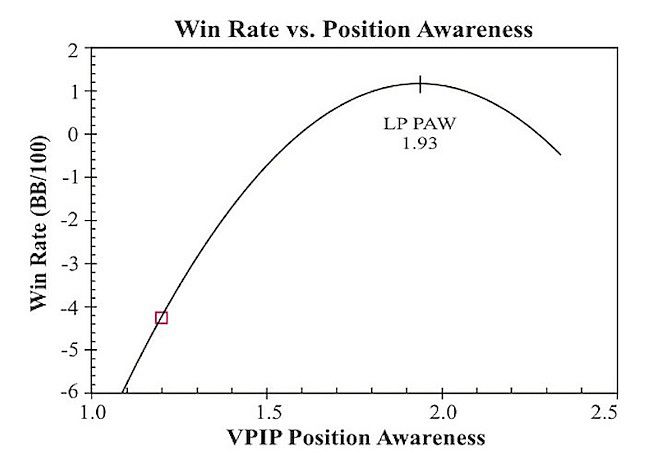
We can see that the average online player has a PAW of 1.2 (red square), which means he plays about 20 percent more hands in late position. But the peak of the curve is at PAW = 1.93, suggesting that we should play about twice as many hands in late position.
Notice how much profit this average player loses because of his unawareness, losing more than 4 BB per hundred hands dealt, instead of winning about 1 BB/100.
The Power of Position
Position awareness improves our win rate due to the high value of information. Consider the curves in Figure PN3-2.
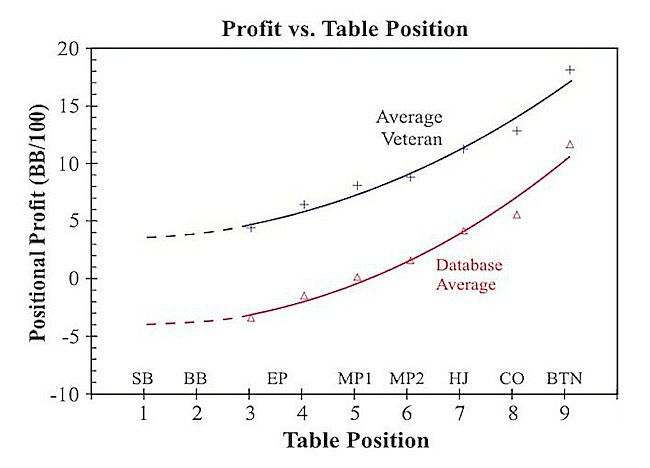
The bottom curve shows the profit won at each table position for all players in the database. This average player wins about 5.5 BB/100 from the cutoff, but loses about 3.5 BB/100 from UTG. And he wins about twice as much from the button as he does in the cutoff! So, not only does improved position increase profit, our profit accelerates as we approach the button.
This huge impact is solely the consequence of the value of information. It is not the result of playing superior hand ranges in late position, since the average online poker player plays a similar range from every position.
Experience Counts
This conclusion holds even for "veteran" online players, the top curve. These veterans are the 2,000 players in the database with the most hands played. Since they are more profitable from every position, it's clear that they are superior players.
Yet the shape of both curves is the same. The average veteran makes about 14 BB/100 more profit from the button than he does UTG, which is about the same as the average player.
The average veteran is profitable from every table position (except the blinds). He is even profitable from UTG. This is because he is generally much tighter when playing from early position than is the average player; he is more position aware.
And for Donkey Games?
Donkey Gamers not only play far too many hands, they do it from every position. Playing 37 percent of their hands from the button may be reasonable in a loose-passive Donkey Game. But playing that many hands in early position is a huge leak.
If we want to average about 18 percent VPIP overall, and if we play about 30 percent of our hands from the button, we must be very tight from EP, perhaps only playing about 10 percent of hands. (This will be discussed more thoroughly in later articles.)
So the way to exploit the position-dumb Donkey Gamers is to lie in wait from the hijack, cutoff and button. Play a tight range in early and middle positions, and then exploit the many loose limpers ahead of you when you have good position.
Plugging Leaks
You may not have a good estimate of your own VPIP from every position. If not, take some notes or estimate it based on the ranges you generally play from each position.
Suppose you generally play a range like {22+, AT+, KQ} from UTG in an average Vegas $1/$2 game. This is a VPIP of only 11.9 percent from UTG, which is considerably tighter than the average Donkey Gamer plays. (You can use Flopzilla or similar software program to estimate your range this way.)
Since you will always be first to act when you are UTG, this VPIP estimate will be very close to what your actual stat would be. You might also play this same range from UTG+1 whenever you are not facing a raise.
You can go through this what-if exercise from every position, assuming no one has raised. Then you can make a rough estimate of what your overall VPIP would be in unraised pots. (Exclude the blinds in your estimate to make it simpler to estimate.)
This number will be somewhat higher than your actual stat would be, since you will sometimes be facing a raise. But if you are somewhere near 20 percent, you are in the right ballpark. If you are playing 30 or 40 percent or even more of your hands, you should begin thinking about tightening up somewhere.
And before I get a barrage of "this is useless because my play depends on..." comments — of course I realize your actual play will depend on a lot of other factors besides your position. But the purpose of this thought experiment is to get a rough handle on your average VPIP vs. position so you can get a general idea of your looseness and position awareness. This is easy to find if you are an online player and use PokerTracker or other tracking programs. But most live players don't seem to have a good grasp on just how loose they are actually playing.
Also in this series...
- Low-Stakes Live Games Differ from Online
- Do You Play Too Many Hands?
- When Can I Take a Bathroom Break?
- Is Straddling a Good or Bad Play?
- A Preflop Question: Is Limping Lame?
- Maximizing Expectation When Betting For Value
- Maximizing Expectation When Betting as a Bluff
- Five Weak Reasons to Bet (and One Weak Reason Not To)
- Do You Have 'Jack-O-Phobia'? Playing Pocket Jacks in Live NL Hold'em
Steve Selbrede has been playing poker for 20 years and writing about it since 2012. He is the author of five books, The Statistics of Poker, Beat the Donks, Donkey Poker Volume 1: Preflop, Donkey Poker Volume 2: Postflop, and Donkey Poker Volume 3: Hand Reading.
In this Series
- 1 Donkey Poker: Low-Stakes Live Games Differ from Online
- 2 Donkey Poker: Do You Play Too Many Hands?
- 3 Donkey Poker: Are You a Position-Dummy?
- 4 Donkey Poker: When Can I Take a Bathroom Break?
- 5 Is Straddling a Good or Bad Play?
- 6 A Preflop Question: Is Limping Lame?
- 7 Maximizing Expectation When Betting For Value
- 8 Maximizing Expectation When Betting as a Bluff
- 9 Five Weak Reasons to Bet (and One Weak Reason Not To)
- 10 Do You Have 'Jack-O-Phobia'? Playing Pocket Jacks in Live NL Hold'em
- 11 Donk Betting in Small-Stakes Live No-Limit Hold'em

